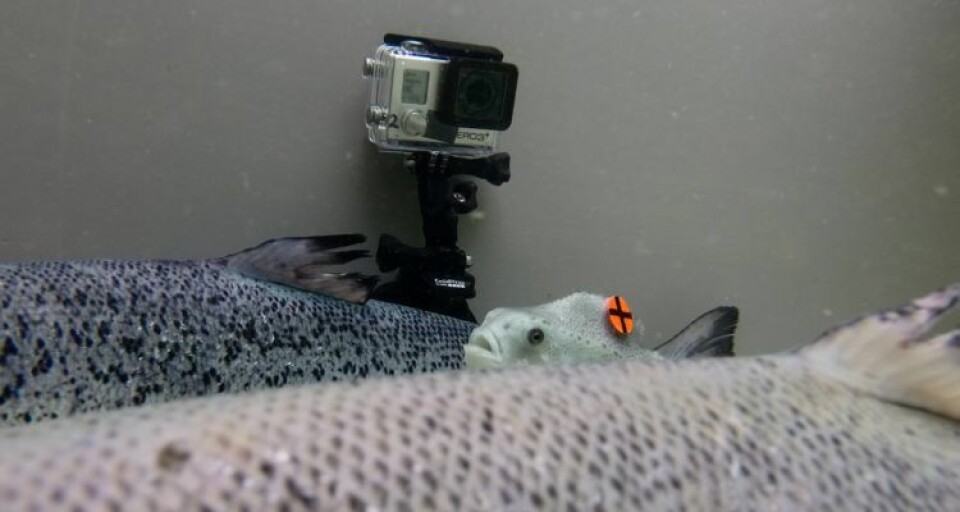
Stress of life in salmon cages may make lumpfish less efficient
Stress may hinder the effectiveness of lumpfish if they don't get time to adapt to salmon in sea cages, a study indicates.
Masters student Fredrik Staven from Nord Universitet in Norway has studied how lumpfish adapt to life in salmon cages straight from the hatcheries, and until they become accustomed to salmon.
In the experiment, Staven divided a group of lumpfish which had never before met salmon into two new groups. One group was placed in cages with salmon and another in a tank without salmon. After a month, both groups were placed in tanks and exposed to salmon.
The results showed that salmon affected both behaviour and stress levels in the lumpfish group that had not been exposed to salmon. On the other hand, the group that had been in the sites salmon over a month, displayed no stress response.
"The results showed a high primary stress response when naive lumpfish met salmon for the first time,” explains Staven.
Lumpfish that had been left in the cage with farmed salmon had significantly lower plasma cortisol values (stress hormone), and showed no change in swimming activity when salmon were introduced in the tank.
The lumpfish which had no experience with salmon had elevated stress hormone levels and high swimming activity as a result of the escape response.
“The findings suggest that roes in the cage have undergone a physiological adaptation of salmon, and have learned that salmon do not constitute an immediate danger,” says Staven.
However, the results do not show how short the familiarisation period needs to be in order for the lumpfish not to get stressed in the cage.
“After a month there has certainly been an adaptation,” says 28-year-old Staven.
The next step, he believes, will be to determine how long the familiarisation period needs to be to prevent the lumpfish becoming stressed.
Staven says that the findings he has made may contribute to an efficient sea lice eating cleanerfish throughout the year.
“A stressed lumpfish is not a good sea lice eater, and as long as this adjustment (to the presence of salmon) takes place, one can not expect it to do a good job.”
It may therefore be beneficial to outsource lumpfish in advance of periods where the level of sea lice is expected to increase, so that the adjustment period for salmon is over before the lice numbers rise.
“Another option could be linked to more innovative solutions where lumpfish are introduced and habituated to salmon before stocking, and I even have a couple of ideas on how this might be resolved,” says Staven.
The reason for the exercise is that following aquaculture's introduction of different species of cleanerfish, including lumpfish, in a closed environment with salmon, kelp hiding and varying environmental changes have been noticed.
“It has therefore been appropriate to observe how lumpfish are able to adapt to life in a closed system, with a focus on adaptation to different types of stressors, especially the presence of salmon,” notes Staven.






















































